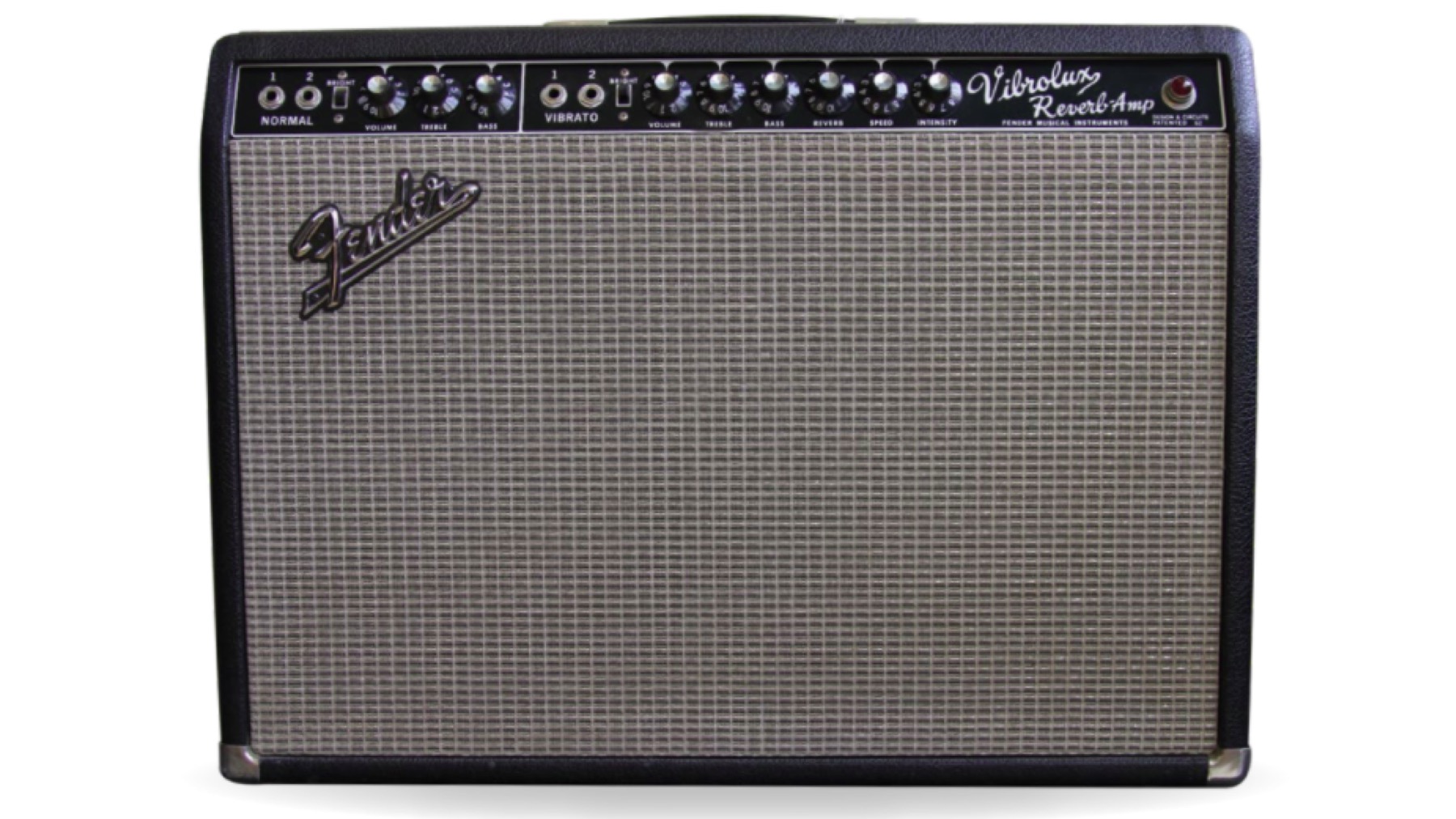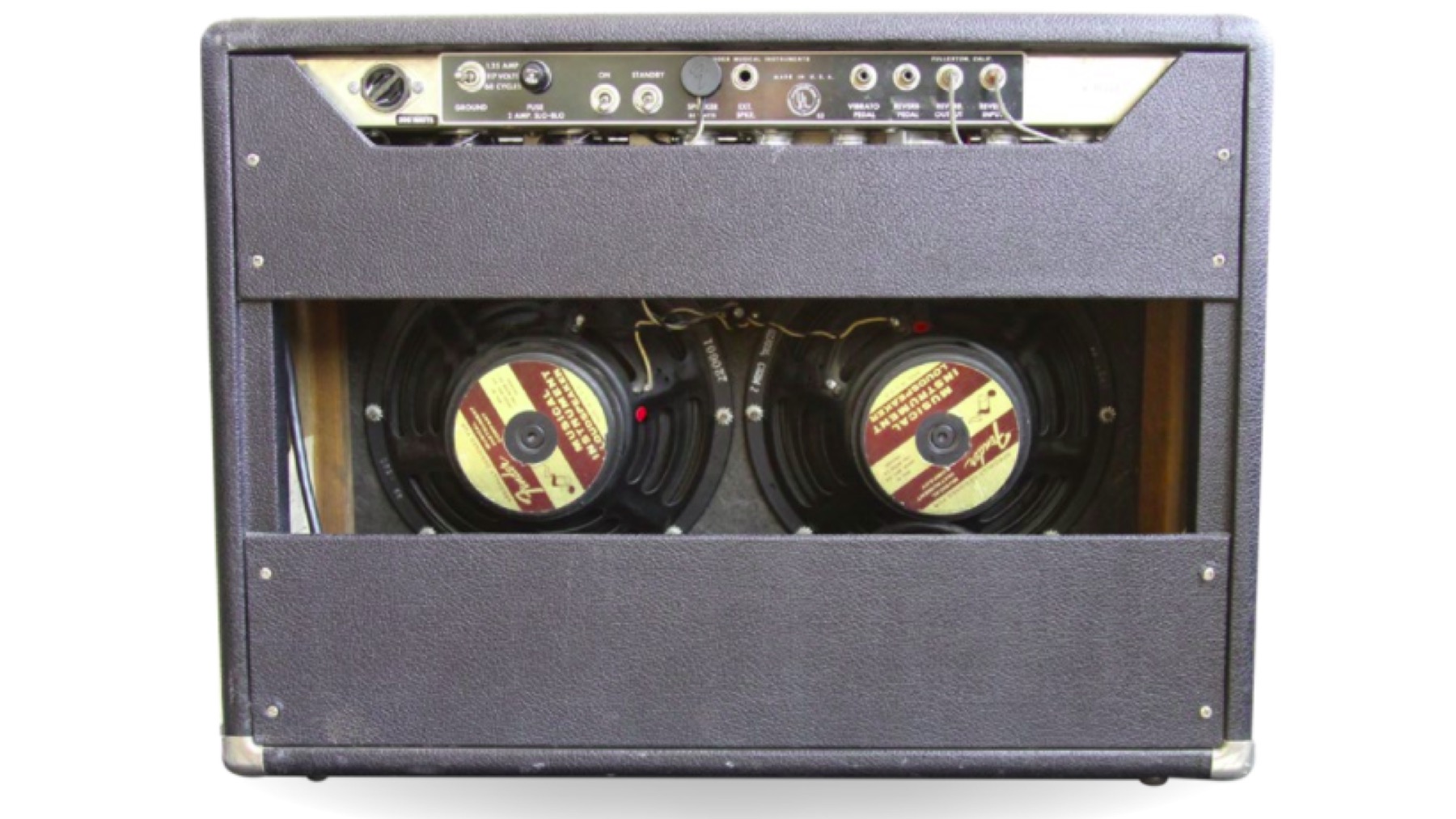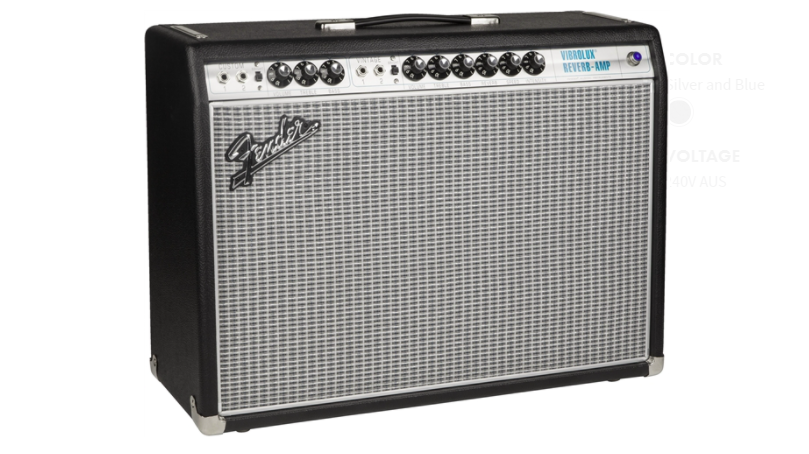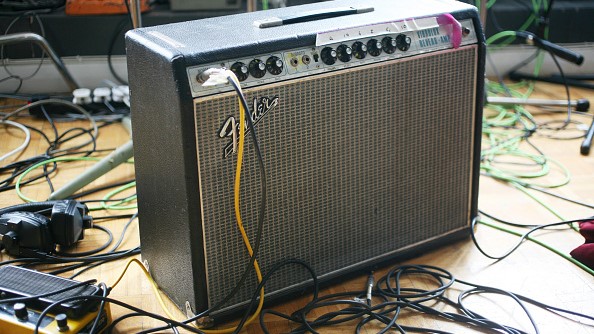Classic Gear: Why the Blackface Vibrolux Reverb Might Be Fender's Best Combo
This vintage amp design is perfect for just about any gig or studio date.

Of all the classic amps Fender has logged over the years, the Vibrolux Reverb is frequently cited as the best all-round, grab-and-go gigging combo. It’s an archetypal blackface model with the most desirable features and tone of ’60s-era amps. It also brings together a whole bundle of specs that make it perfect for just about any gig or studio date that requires such timeless attributes.
Fender’s 1963–67 blackface models are beloved for their shimmering, glassy, bell-like clean tones and easy, dynamic overdrive when pushed hard. The Vibrolux Reverb delivers those qualities in a compact yet reasonably powerful package, which is one reason why it’s so popular. It can handle the bigger gigs that a Princeton Reverb or Deluxe Reverb can’t cut. At the same time, it doesn’t have to be turned up particularly loud to sound great, so it’s also completely workable in smaller venues, where you’d normally bring a “student-sized” amplifier.

Juicy Tones at Manageable Volume
The Vibrolux Reverb gets its full-throated, big-bottle Fender sound from a pair of 6L6GC output tubes. Whereas many similar amps put out 45 to 50 watts from the same pair of tubes, the Vibrolux Reverb generates about 35 watts. This is due to its smaller output transformer (OT), which Fender spec’d specifically for this combo’s size and requirements. That’s another important part of the Vibrolux Reverb’s charm: While helping to rein in the overall volume, that smaller OT also allows the amp to sound juicy, full and saturated at less-than-deafening volumes. This makes it far more manageable than, say, a Super Reverb or a Twin Reverb.
And while many amps from this period had switched to solid-state rectification, the Vibrolux Reverb still used a tube rectifier, making it a tactile, touch-sensitive combo with a lot of “feel” in its playing response.

Articulate and Powerful
The amp’s 10-inch speakers are another major part of its magic. The Jensen C10Qs are the favored model, but the Oxford 10L5 speakers found in many examples are also highly regarded. There’s something about 10-inch speakers that works beautifully to enhance the archetypal Fender blackface tone. It’s heard in elements such as the articulate high-end detail, immediate response and firm – if not overly capacious – low end. This speaker complement also makes for a compact and relatively lightweight combo that is still powerful and punchy. A pair of 10-inch cones offers more surface area than a single 12-inch cone and can handle more power, given like-for-like speaker models.

Unbeatable 'Verb & Trem
Finally, the Vibrolux Reverb nails everything we’ve come to love about classic Fender blackface tone: the succulent marriage of harmonic depth and ringing clarity; the ability to segue from bouncy twang to singing blues when the guitar’s volume control is rolled up a couple of numbers; and the irresistible wash and throb from one of the best tube-driven reverb and tremolo circuits ever loaded into an amp.
The blackface Vibrolux Reverb’s appealingly portable dimensions have made these amps even more collectible – and therefore more expensive – than the electronically similar 2x12 Pro Reverb. For those seeking this combo’s charms at a more affordable price, investigate silverface examples from the late ’60s and early ’70s, which can be converted to blackface specs with the aid of a good tech (although they often sound great just as they are). Otherwise, try Fender’s more recent ’68 Custom Vibrolux Reverb, which pays tribute to the look and sound of the original silverface version.
All the latest guitar news, interviews, lessons, reviews, deals and more, direct to your inbox!
Essential Ingredients of the Blackface Vibrolux Reverb:
- Two 6L6GC output tubes generating around 35 watts RMS
- Tube-driven reverb and tremolo
- Normal and vibrato (a.k.a. tremolo) channels
- GZ34 rectifier tube
- Preamp tubes: three 7025s, two 12AX7s, one 12AT7
- 2x10 combo with Jensen C10Q speakers
Dave Hunter is a writer and consulting editor for Guitar Player magazine. His prolific output as author includes Fender 75 Years, The Guitar Amp Handbook, The British Amp Invasion, Ultimate Star Guitars, Guitar Effects Pedals, The Guitar Pickup Handbook, The Fender Telecaster and several other titles. Hunter is a former editor of The Guitar Magazine (UK), and a contributor to Vintage Guitar, Premier Guitar, The Connoisseur and other publications. A contributing essayist to the United States Library of Congress National Recording Preservation Board’s Permanent Archive, he lives in Kittery, ME, with his wife and their two children and fronts the bands A Different Engine and The Stereo Field.

